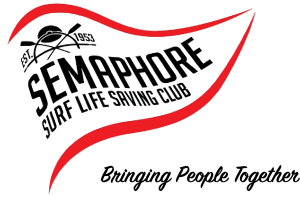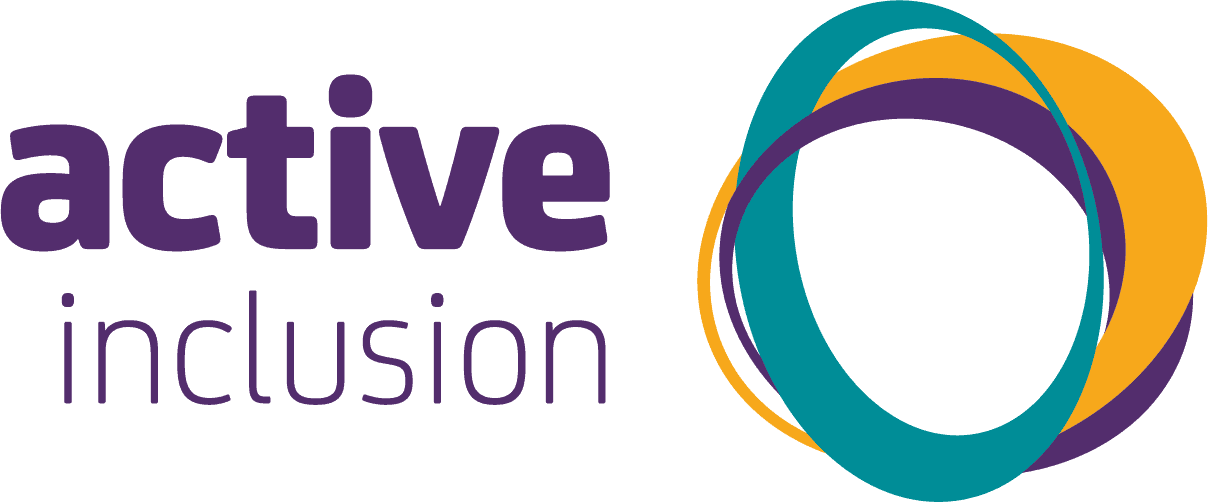
14 May Semaphore Surf Lifesaving Celebrate Successful Inaugural Inclusive Nippers Program

Surf Live Saving is a traditional and essential part of Australia’s modern identity with clubs integral to seaside towns and beachside suburbs across the country. The visible Surf Life Saving Clubs patrolling our beaches play a critical role in keeping South Australian beaches safe to enjoy, while also offering valuable sport and social membership opportunities to individuals, families and the local community.
Like many of South Australia’s local surf lifesaving clubs, Semaphore Surf Life Saving Club (SSLSC) has a long and successful 70 year history, and today boasts over 490 members. The western suburbs club offers an open and family friendly atmosphere where you are welcomed with open arms, whether you are new to the club or ‘part of the furniture’.
SSLSC club secretary Kate Newman has been actively involved in the club for over eight years and along with the dedicated committee, lives and breathes the club motto: ‘Bringing People Together”. This club pillar drives their engagement strategy and connection to their community to ensure all people can join in, share, compete and benefit from their club opportunities. For Kate, it was also the catalyst in the creation of the club’s inaugural Seabird Nippers Inclusive program in 2020.
SSLSC has over 180 Nippers involved in their junior program. Nippers, the national program for children aged five to 13 years old, is a cherished childhood memory for many Australians providing important water safety and awareness skills as well an introduction to surf lifesaving skills, competition opportunities, team work, community volunteerism and friendships.
Kate however had noticed that by the time children reach the age of ten, significant gaps begin to become noticeable within the Nippers program when a child requires additional support and that traditional programs were not adaptable nor flexible enough to accommodate for children with disability.
After watching a documentary around the Nobby’s Beach Surf Life Saving Club’s Albatross Inclusive Nippers program on the Gold Coast, Kate reached out to program director Nick Marshall to discuss setting up and running an equivalent in South Australia to address this gap in opportunity that was preventing young people with disability from getting involved in local surf lifesaving.
The inception of the program was a collaborative effort, which saw Kate reach out to numerous organisations, and engage with individuals both inside and outside the club, including Inclusive Sport SA CEO John Cranwell.
“I first reached out to John when we were developing the program for guidance around the language we were using, how to best support program participants and their families and also challenges we came up against when deciding on program delivery requirements” said Kate
One challenge was around safety and the need to easily track inclusive program participants who may require additional support and monitoring. As a result, these problem solving conversations led to a new initiative implemented across the club’s Nipper program, with all 180 participants now wearing a cap, colour specific to each group. This has not only helped to make sure everyone on the beach is safe and accounted for; it also demonstrates how a simple idea can represent inclusion best practice and benefit the entire club.
“We were just going to do it for the Seabirds, but John was quick to point out the unintentional harmful message this could send by singling a group out and suggested that it was something that could benefit all our young nippers and volunteers running the programs. Especially when everyone is on the beach at the same time.”
The program is a true community effort. Driven by Kate and supported by the SSLSC, the pilot Inclusive Nippers program involved seven participants. Over a six week block, the one-hour sessions ran directly alongside all club Nippers programs, teaching the same skills and completing activities with adaptations as required.

The program’s success is the result of club engagement and buy in at all levels and whilst the support of the SSLSC committee and members was not a shock to Kate, the individuals who volunteered to help were a pleasant surprise.
“I received support from people I didn’t expected it to come from, including two young men who are club champions who let me know they’ve worked with children with disability and they wanted to help run the program,” said Kate.
Involvement of young people within the club has also been a central focus for the SSLSC, particularly those aged 13-18 years old, an age known for being a point where young people are at risk of disengaging with community sport and recreation. A part of ensuring that those who have aged out of Nippers and are now within senior categories stay involved has been activities such as post session group breakfasts each week and the involvement of seniors in the Inclusive Nippers program.
“I currently have three 13-14 year olds and an 18 year old volunteering with the Seabird Nippers as program buddies and it’s been fantastic to see them grow along with participants, form relationships and realise that they have a lot to give back to both our club and the community.”
“The enthusiasm from our Champions and teenagers and eagerness to get involved in the program is exactly what our club is and highlights our culture: ‘Bringing People Together’. It’s what we strive to do within the club and in the community,” Kate said.
In an era of COVID-19, getting the program up and running in 2020 presented additional challenges. Requiring adaptably to health and physical distancing guidelines by SSLSC. As with other challenges identified during the process of the program development, the club quickly innovated and adapted the current procedure in a way that maintained safety whilst allowing parents of the Seabird Nippers to remain close to the program in case a participant needed additional support from a caregiver.
A key strategy in the development of the program was to seek the input of those with lived experience of disability. Recognising the importance of engaging and listening to the concerns being voiced by parents of children in the Seabirds was crucial to SSLSC in providing a positive experience for children involved as well as the caregivers. Kate notes that SSLSC are lucky to have Kym Meers, a parent of a child with disability, actively involved in the club who is also part of the Seabirds program.
“Kym’s experience and opinion is important to us at the club and the program is undoubtedly better from her input. Other caregivers are also more comfortable in approaching myself and the team with feedback about the program.”
This continues to play a central role in guiding the evolution of the Nippers program and Kate believes that having this existing relationship, and seeking guidance has set a good foundation to establish an honest and constructive environment for feedback for the entire club.
“Seeing Kym openly discuss concerns she had with me about the program definitely encouraged other parents to speak up about where they had noticed we could improve or adapt,” Kate said.
The introduction of the Inclusive Nippers program has also had flow on positive impacts for the SSLSC itself with Seabird participants and their families welcomed into, and embracing, the club’s social culture and environment.
“The Seabirds finished an hour earlier than the rest of the Nippers age groups so parents would go up to the Club, sit on the balcony together and enjoy each other’s company,” explained Kate.

“As the rest of the Nippers finished we also saw some families stay, hang out with the larger community and grab a bite to eat and drink at the club.”
Another practical step the club is committed to ensuring as the Inclusive Nippers program grows is that the environment remains safe and welcoming for the program’s participants and their families through reserving the larger change rooms downstairs for program participants. This will be in addition to the availability of a separate accessible toilet and shower within the facility, to allow caregivers or children of a differing gender who needed support in these tasks into the same change room. Kate notes that the
entire club has been understanding and supportive for when this happens in the future.
As the season came to a close in early 2021, three of the Seabird Nippers joined their peers in competing at a surf lifesaving carnival hosted by Surf Life Saving SA. The event saw participants and families stay at Normanville for the weekend with the Seabirds continuing their weekly Saturday training, integrating into age appropriate groups with additional support from their program buddies throughout modified activities.
“We had three Seabirds members training on the Saturday, Liam, Izla and Andrew,” said Kate, “with their buddies who grabbed rescue boards they went out around the large board course and out to the pontoon.”
“Some of the parents expressed how happy they were to see their kids do things they never thought they’d do”.
On the Sunday of the carnival Seabird Nippers Izla and Andrew competed in a number of mainstream beach events including “flags”, “sprints” and a long distance run It was apparent that the carnival officials’ willingness to accommodate and allow the buddies to support the Seabirds during these events ensured a positive experience for participants on the day.
“The Seabird buddies were given coloured wrist tags to use so that we could be allowed entry into areas usually only for only officials and participants during events.”
When asked about where she sees the program going next or what the future goals for the SSLSC are, Kate and the club have already set the ball rolling on a number of projects. Top priorities include working with Surf Life Saving South Australia and City of Charles Sturt council to create accessible boardwalk ramping at Semaphore beach, the procurement of beach matting to increase access onto the sand for community members who utilise wheelchairs and mobility aids and for the expansion of the Nippers program to neighbouring surf lifesaving clubs. The SSLSC also hopes to work with Surf Lifesaving SA so that the Seabirds can compete in water events at future carnivals as well. A project that will require collaboration, innovative adaption and inclusion best practice. Kate and the Semaphore Surf Life Saving Club are looking forward to the challenge.
Semaphore Surf Life Saving have undertaken the following training with Active inclusion:
- Adaption and Inclusion for Youth Programs
- Activating Inclusion
- Inclusive Language
- Club Marketing & Communication
- Website & Social Media Audit
*images provided by Semaphore Surf Life Saving Club
